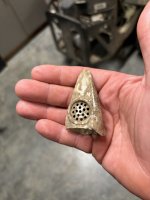My specific interest is detecting gold jewelry at the beach. This would be in one foot of salt water, salt water sand & dry sand. I was considering a used (19 khz) fisher gold bug. Which model gold bug would you suggest? Maybe there is a preferable detector for my specific use?
Amazon Forum Fav 👍
Upvote
0






 hehh. Still the gold bug will work... just not as hot as one would think. No machine just gets the gold... gotta get the junk or its just not fair to the rest of us, no? *grin*
hehh. Still the gold bug will work... just not as hot as one would think. No machine just gets the gold... gotta get the junk or its just not fair to the rest of us, no? *grin*

